Walking through the Museum of the Southern Jewish Experience
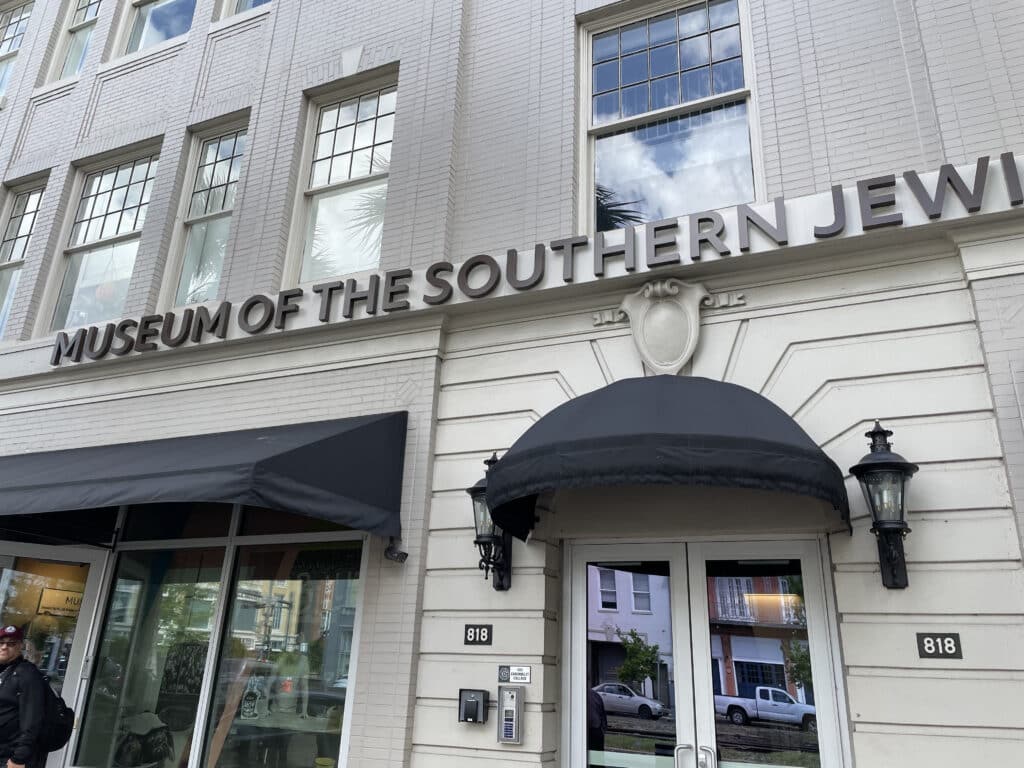
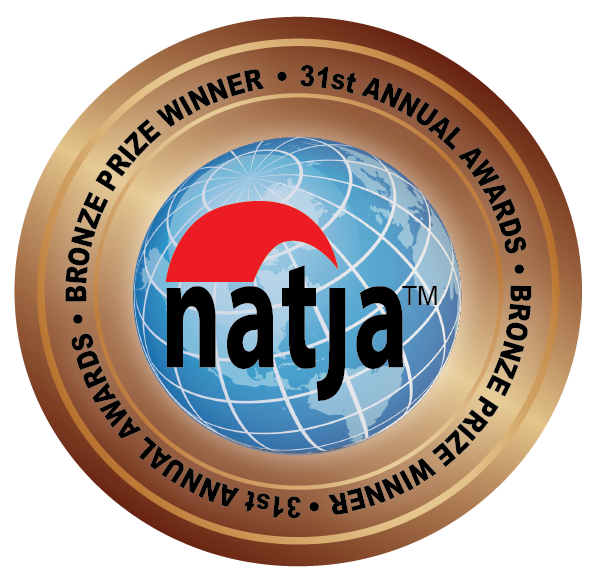
In the century spanning from 1820 through 1924, a constant and increasingly steady flow of Jews—mostly from Central Europe—left their towns and villages and embarked on an arduous journey to America. This culminated in an immigration surge towards the beginning of the twentieth century. Impelled by the great social and political upheavals of the nineteenth century—urbanization, industrialization, overpopulation–economic hardship, and persecution, millions of Jews made their way to America in search of a better life. Many Jews settled in the North East but a large population rebuilt their lives in the South.
“You can’t talk about the history of the South or even talk about the history of the United States without talking about race…It’s the blanket that covers everything.”
Kenneth Hoffman
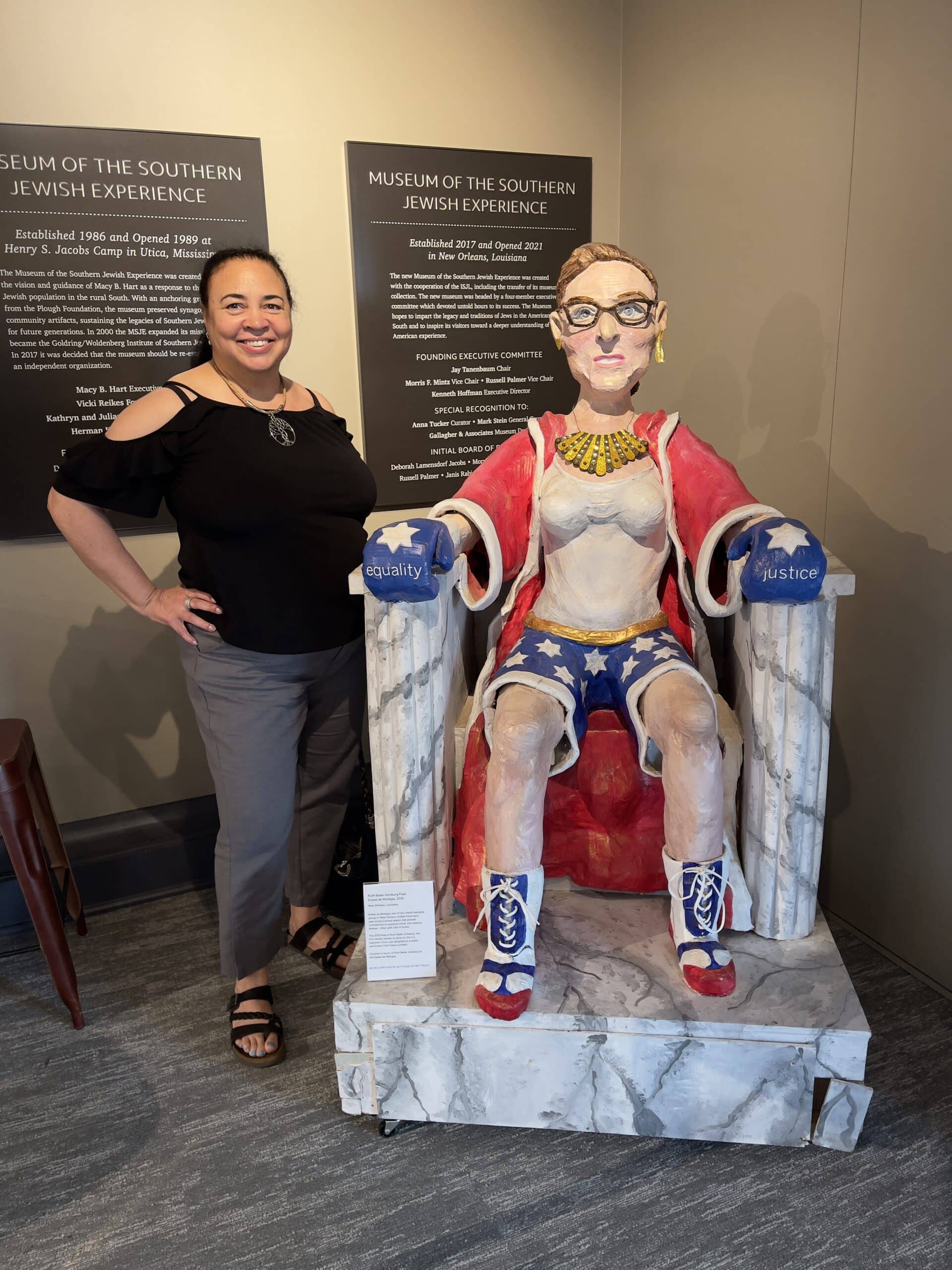
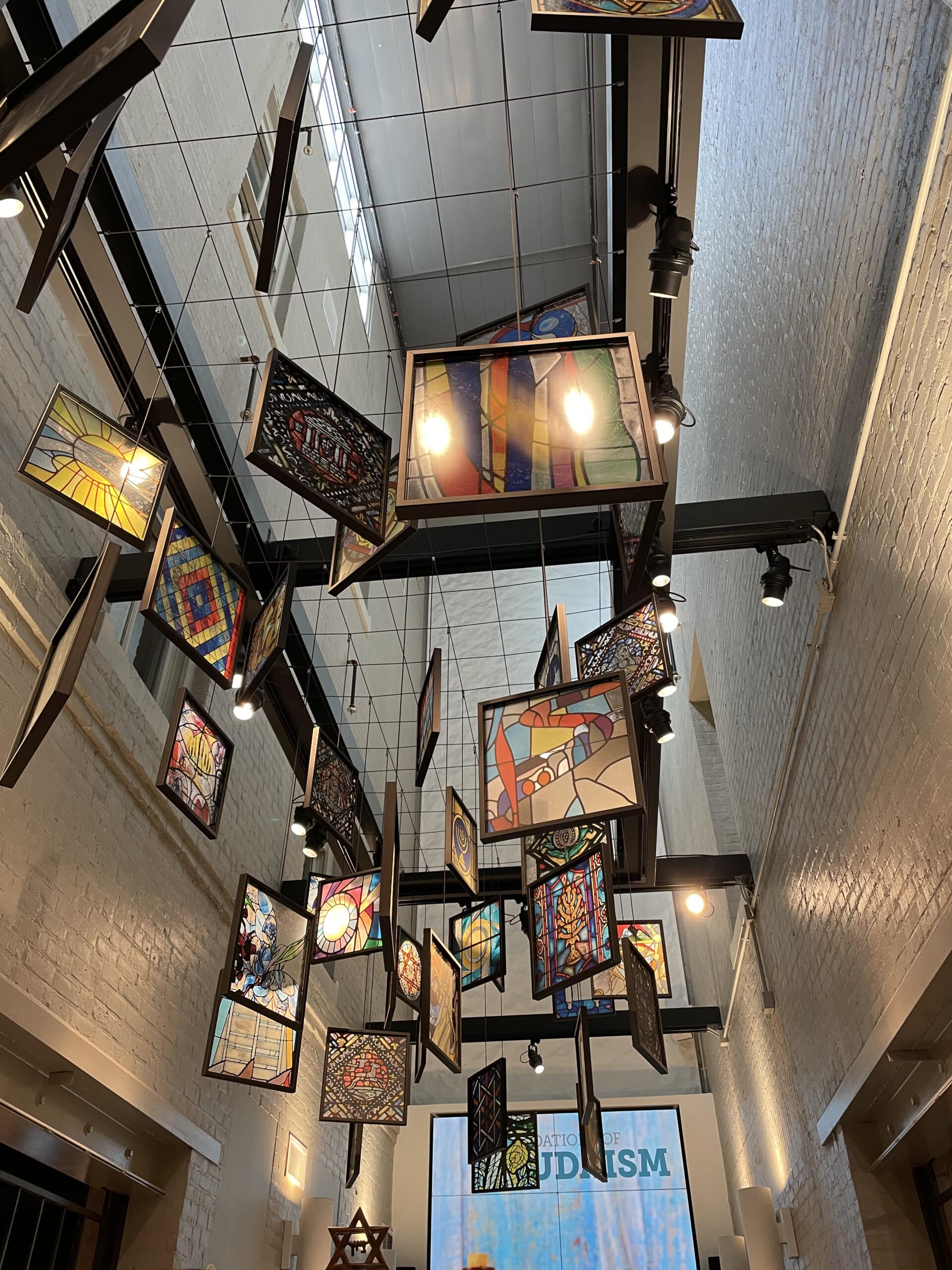
The history of the Jewish community in the South is rich, complicated and surprising in many ways but their stories are not well known. The Museum of the Southern Jewish Experience, founded during the pandemic, traces the history of Jews in the American South.
In this World Footprints episode, Kenneth Hoffman, Executive Director at the Museum of the Southern Jewish Experience (MSJE), gives us a guided tour and explains in depth how Jews in the American South influenced and were influenced by the cultural heritage of their local communities. Tune in to learn more about the Museum of the Southern Jewish Experience, why it was founded, its significance beyond the Jewish community, and the collection of all the artifacts in the museum.
Shalom Y’all!!
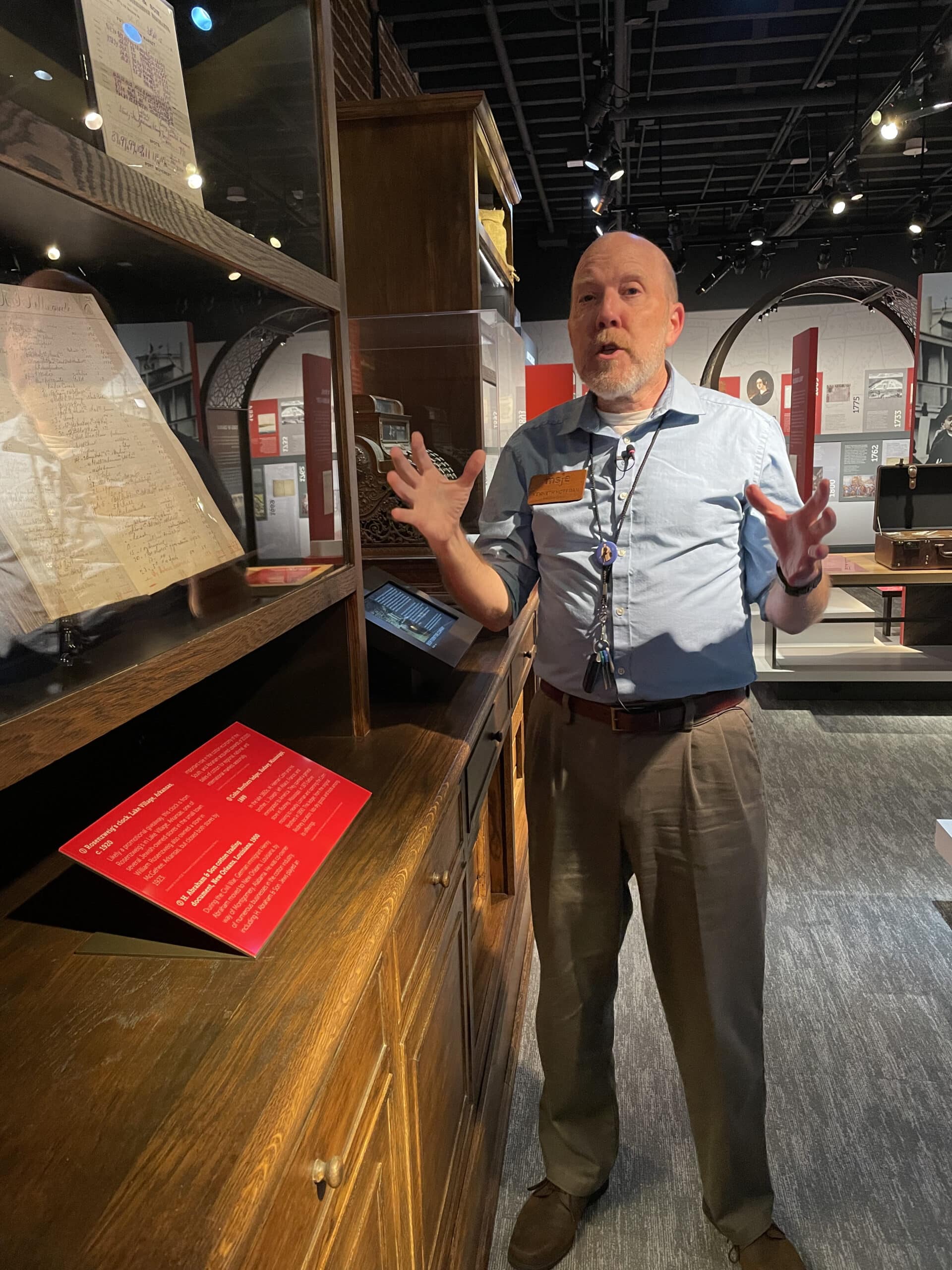
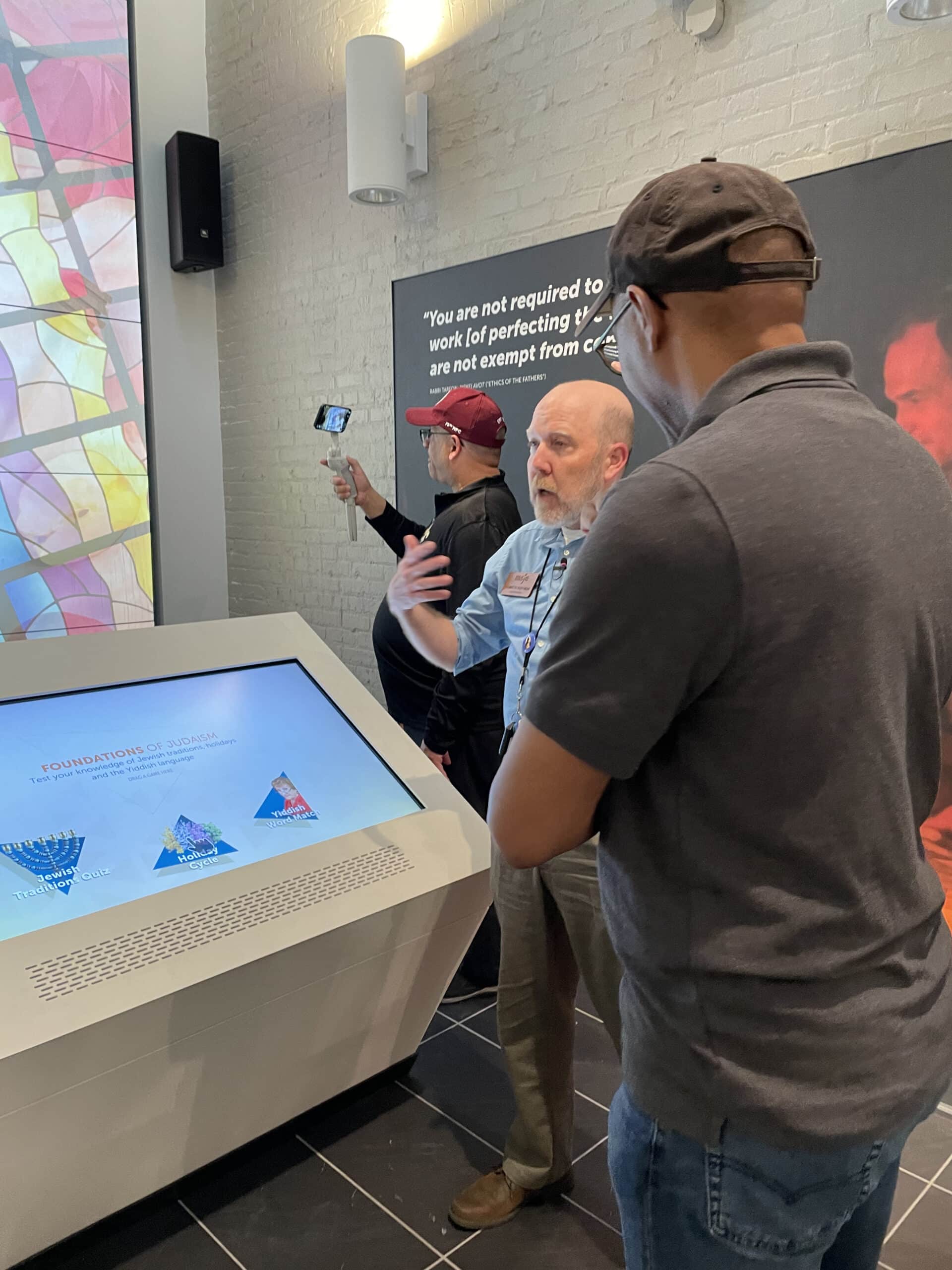
Key highlights
[00:00:59] Introduction to Kenneth Hoffman
[00:01:50] Beginning of the Museum of the Southern Jewish Experience
[00:04:17] The full story of Jewish immigration to the United States
[00:05:29] Stories within the Museum of the Southern Jewish Experience
[00:07:44] Curating artifacts for the museum
[00:08:59] Immigrants movement throughout the South
[00:15:05] From slave owner to ally
[00:18:38] More than merchants: A glimpse of Jewish life in the South
[00:21:37] The lynching of Leo Frank
[00:23:17] State of anti-Semitism in the South today
[00:26:05] The foundations of Judaism
[00:29:35] Ernst Borinski: From Swastika to Jim Crow
[00:30:53] Allyship of Jews during the Civil Rights Movement
[00:32:39] Southern Jews in popular culture
[00:33:56] The making of a community quilt
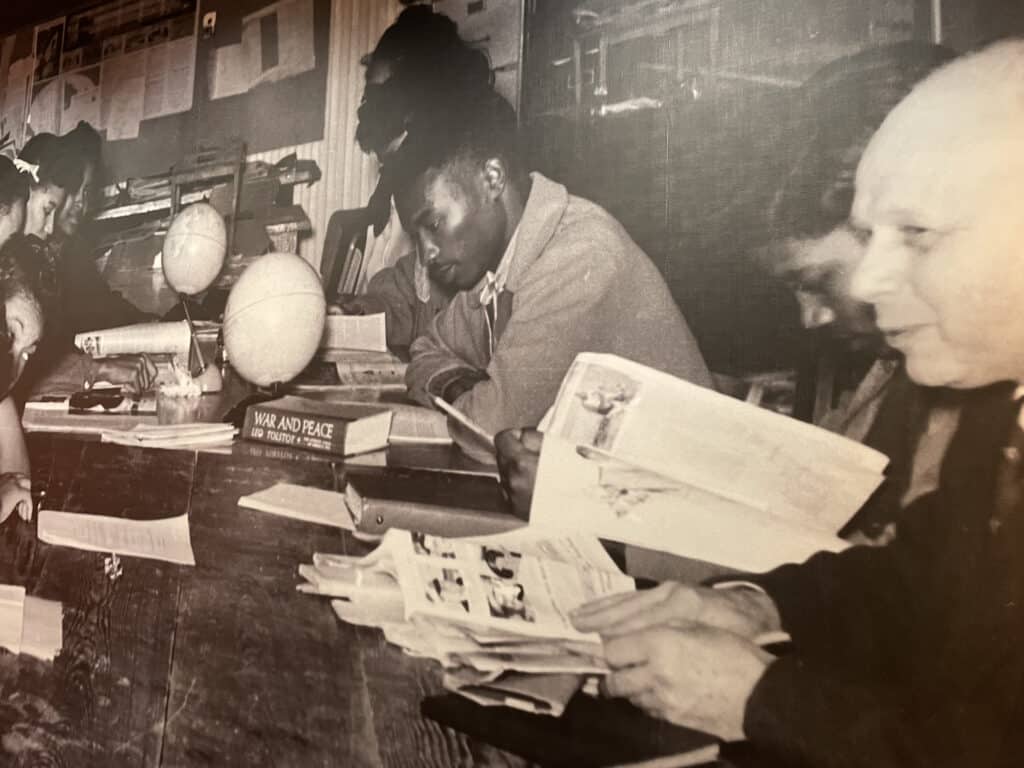
Notable Quotes
- So we’re trying to expand people’s understanding of what it means to be a Southerner, what it means to be Jewish, and ultimately what it means to be an American.
- In this day and age of virtual everything, having real pieces of history is unique. So we have a collection of over 4000 objects that we can display.
- You can’t talk about the history of the South, or you really can’t talk about the history of the United States without talking about race; it’s the blanket that covers everything.
- Jews owning slaves is not our proudest moment, but it’s part of history, and it’s important to tell it and important that people know and young people know so that they can move forward with the knowledge they need to be the kind of person that’s going to be a better citizen for everybody.
- We’re not a museum that’s reacting to the news cycle, but having just said that we do feel a part of our mission is to introduce people to strangers in a strange land and show how those strangers in a strange land can contribute to the strength and vitality of their community.
- We are conscious when we design the exhibit. We were very conscious of including women’s stories, children’s stories, and Jews of color because 12% of American Jews are Jews of color.
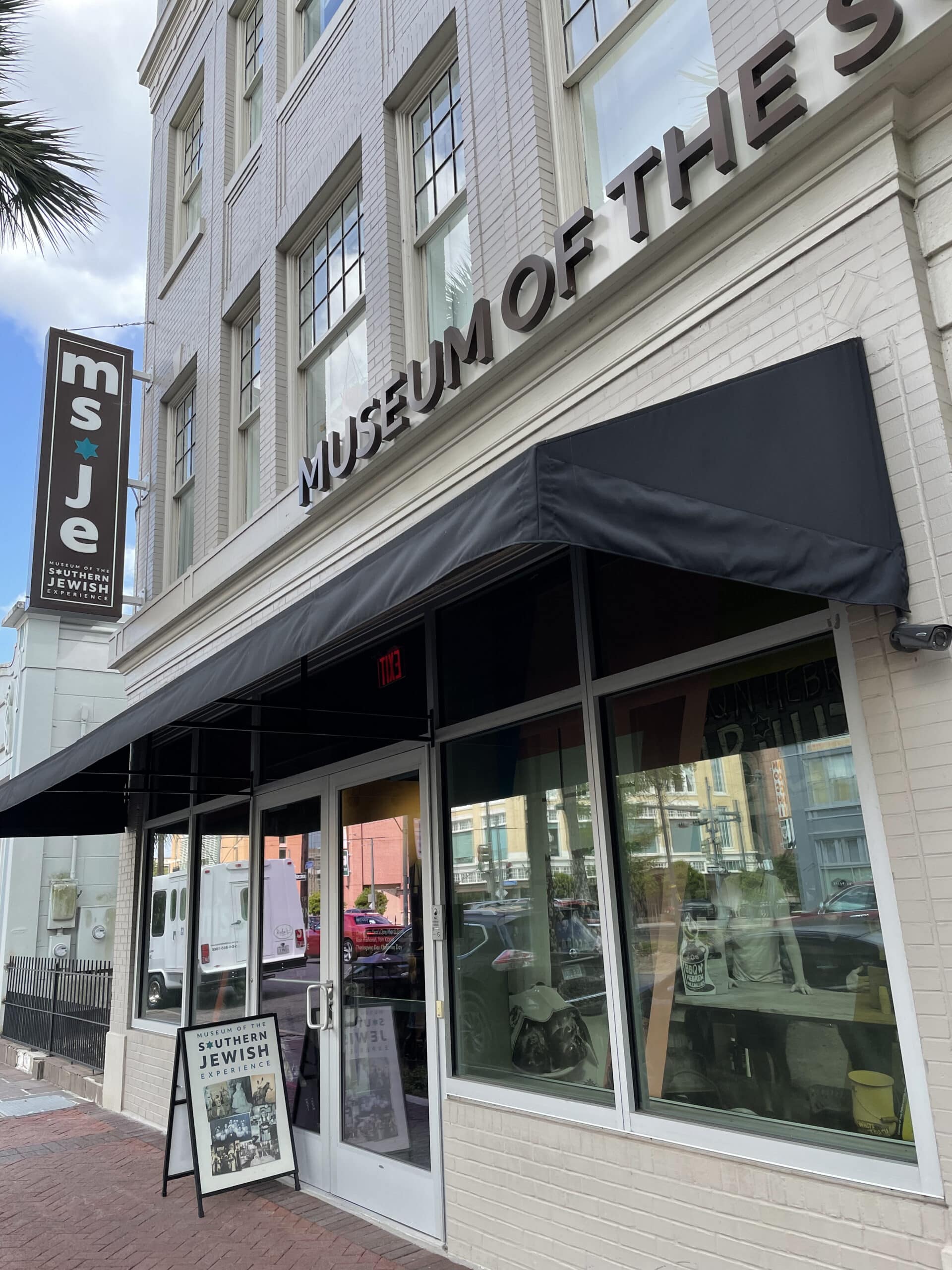
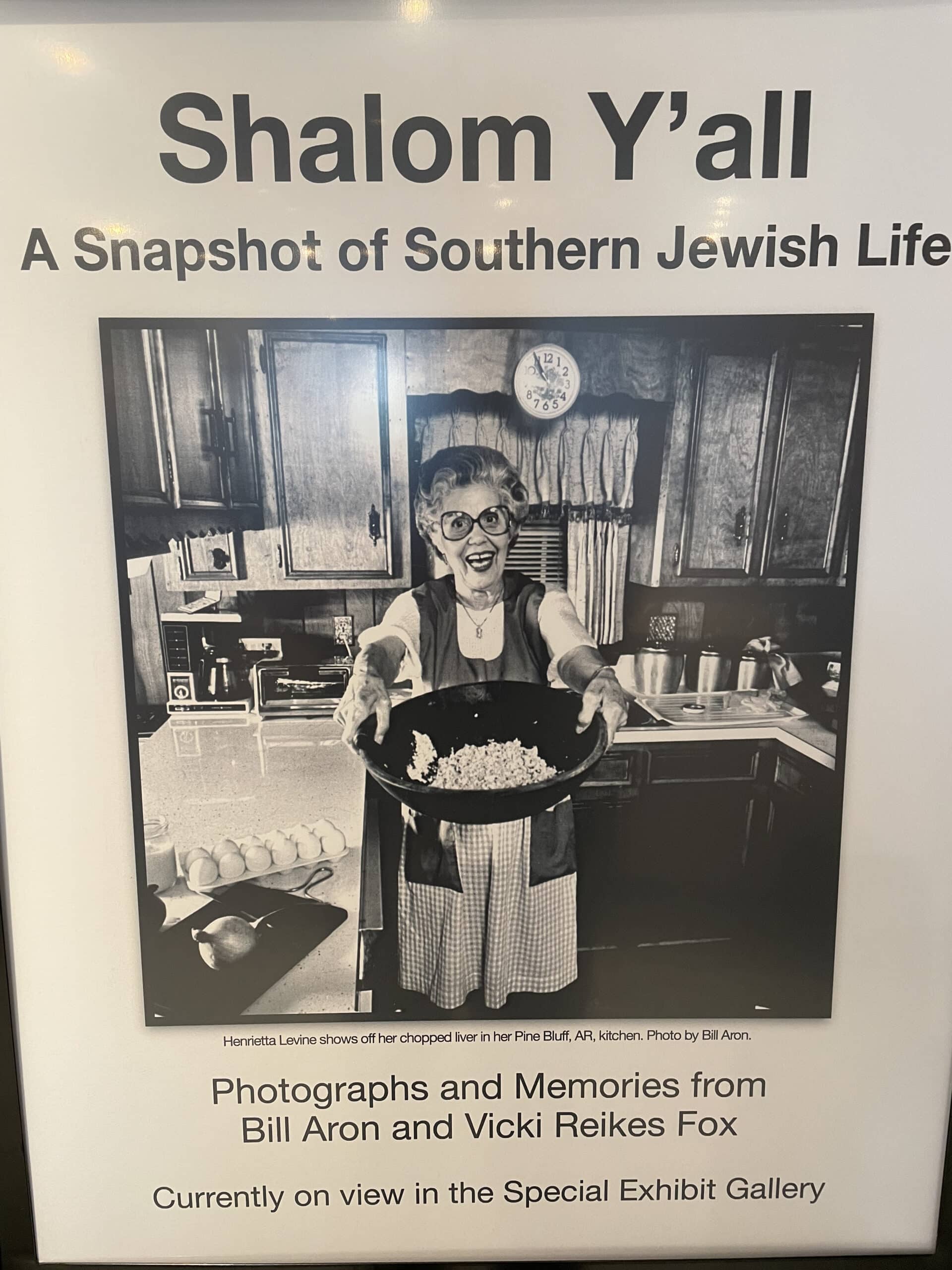
Resources
Connect with Kenneth Hoffman on LinkedIn
Museum of the Southern Jewish Experience: https://msje.org/
Support World Footprints with a 5-star rating and review on Apple podcasts or wherever you listen
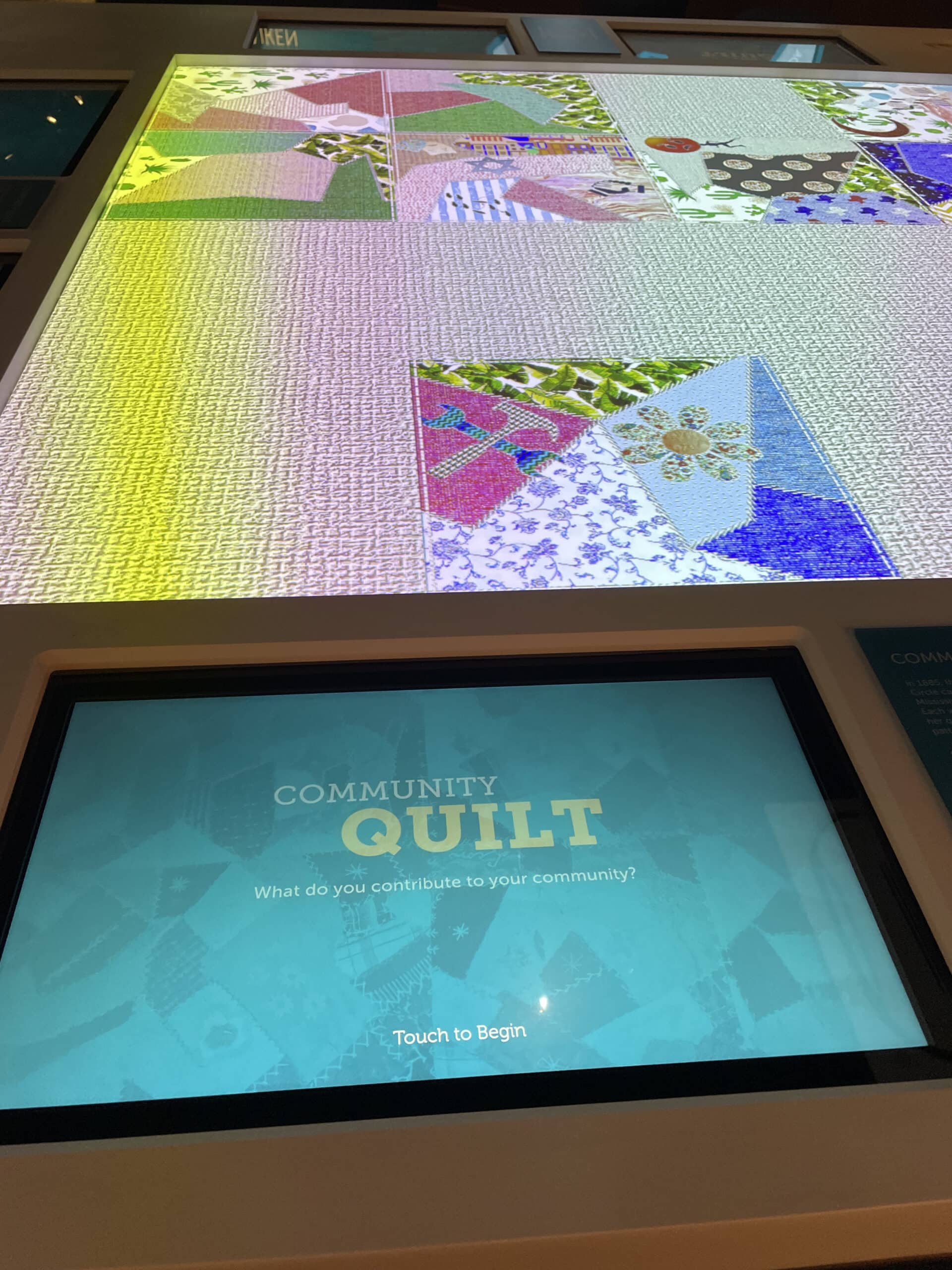
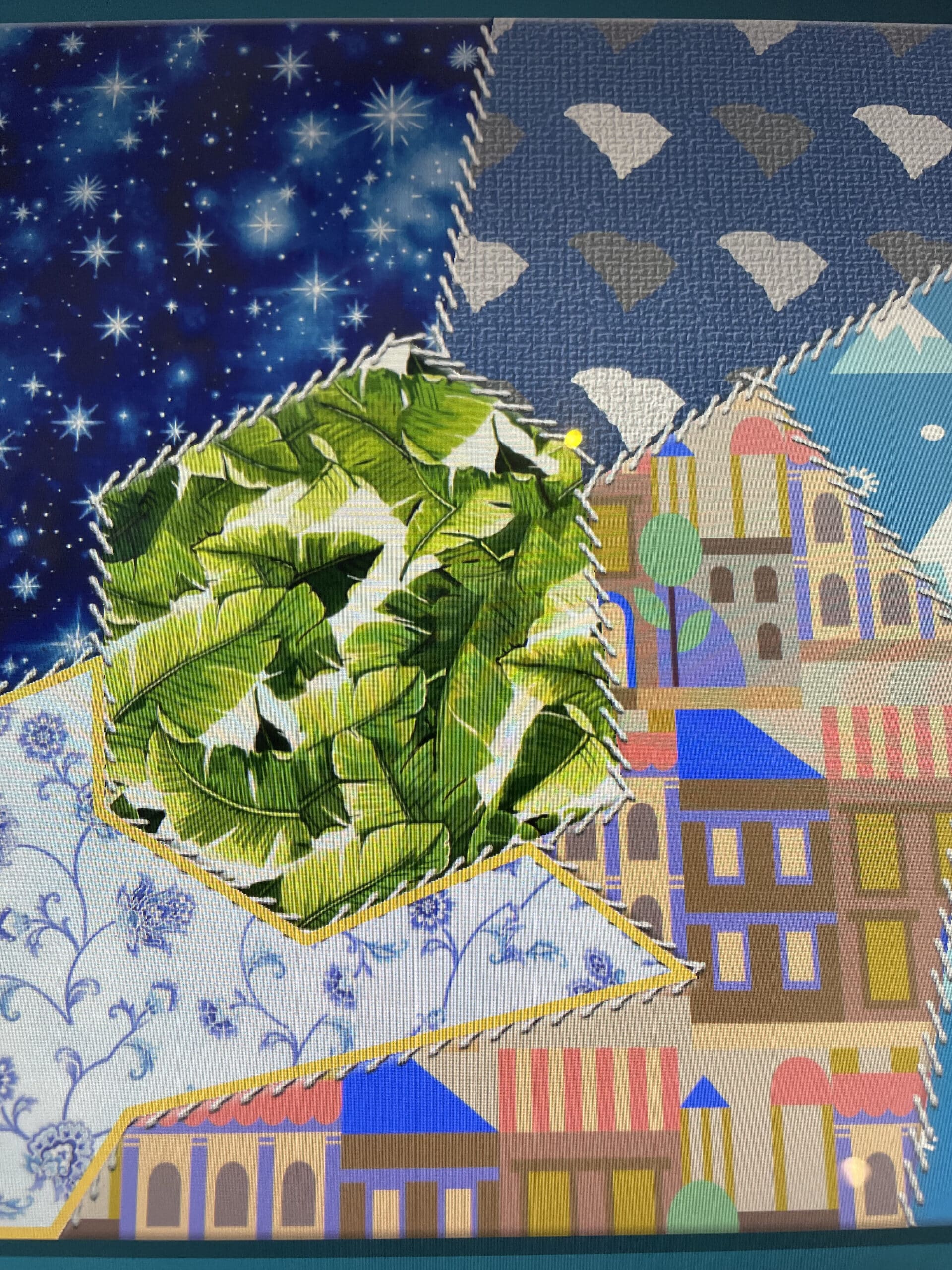
Book Your Stay Now Near Museum of Southern Jewish Experience, New Orleans, USA
Use the interactive map below to search, compare and book hotels & rentals at the best prices that are sourced from a variety of platforms including Booking.com, Hotels.com, Expedia, Vrbo and more. Search for ANY destination by clicking in the upper left corner of this map. You can also use the filter to fine tune your search, find restaurants, attractions and more!
PODCAST PLAYER & LINK TO FULL TRANSCRIPTS ARE BELOW
Guests:
[00:00:10.510] – Kenneth
We think we should be remembering and teaching the good and the bad. So, we talk about Jews that owned slaves, own enslaved people that fought for the Confederacy. These were mostly new Americans immigrants or sons and daughters of immigrants trying to fit in. Oftentimes immigrants are the lowest rung of the ladder. These immigrants in the south were not the lowest rung of the ladder because African Americans were the lowest rung of the ladder. So automatically they had an advantage. And like most people, they took advantage of that advantage.
[00:00:52.370] – Tonya
Welcome. You’re listening to World Footprints. I’m Tonya Fitzpatrick.
[00:00:56.720] – Ian
And I’m Ian Fitzpatrick. You’ve just heard a clip from our interview with Kenneth Hoffman, executive director at the Museum of the Southern Jewish Experience in New Orleans.
[00:01:08.870] – Tonya
The museum, which opened in 2021 during the Pandemic, explores the many ways that Jews in the American South influenced and were influenced by the distinct cultural heritage of their communities.
[00:01:23.870] – Ian
Kenneth took us through the museum, and we weaved our way around other visitors while he shared the diverse relationships and experiences encountered by Jewish communities in the American South from the Colonial Era to the present day.
[00:01:38.440] – Tonya
Many of the stories you’ll hear in today’s episode are not widely known. But before we uncover those stories, we had to ask Kenneth how this museum came to be in New Orleans.
[00:01:50.830] – Kenneth
Well, this is a reboot of a museum that existed before previously in the state of Mississippi at a Jewish summer camp in the middle of Mississippi. So right there, that phrase is very strange to some people, a Jewish summer camp in Mississippi. But it’s true. In the 1980s, when small town Jewish populations across the South were disappearing because the children were going off to college and not wanting to return to the small town, they wanted to be in Atlanta or Nashville or New Orleans or Dallas. So, the towns were disappearing. So, the camp served as a repository for a lot of the religious artifacts and items from synagogues. And they built a little museum at the camp, but it was very much for the campers and their parents. It was very sort of inward looking. They closed that museum in 2012, and they decided to make a museum that was more outward looking, and they looked for a city that had a lot of tourists coming through, that had a lot of Jewish history and that had a lot of support for this kind of a museum. So New Orleans was chosen, and we set about to recreate.
[00:03:14.490] – Kenneth
Not even recreate it because it’s a totally new museum. It’s modern, it has new artifacts, it has an expanded mission. And we managed to open it right in the middle of the COVID Pandemic.
[00:03:28.950] – Tonya
Of course, you did.
[00:03:30.530] – Kenneth
We were delayed a little bit from when we wanted to open, but we finally got it open.
[00:03:35.770] – Tonya
Wow. And it’s thriving. We walked in and there were a ton of people here.
[00:03:41.790] – Kenneth
We’ve got a great group of senior citizens in here from a local place and we just love welcoming locals, tourists, Northerners, Southerners Jews, non-Jews, everyone’s welcome.
[00:03:57.720] – Tonya
Excellent.
[00:03:58.860] – Ian
So, Kenneth, given that we’re here in New Orleans, and when we think about the Jewish population in America, we don’t always think about the South in terms of that experience. What is unique about the Jewish experience in this region of the country?
[00:04:17.890] – Kenneth
Well, I like to use the metaphor or the story. If I ask ten people what their vision of immigration to the United States is, nine out of ten are going to say Ellis Island. And there’s good reason for that. Millions of immigrants from all over the world came to the United States through Ellis Island. But that’s not the full story of immigration to the United States. People did come to other regions and the South is one of them. So, what we’re trying to do is to expand people’s understanding of what it means to be a Southerner, what it means to be Jewish, and ultimately what it means to be an American. Because we are a country of immigrants and all these different folks down here in New Orleans, we love gumbo and we talk about all the different ingredients that go into the gumbo. And the more you put in there, the more delicious you get. Just make sure you don’t put tomatoes in there. That’s not what we do. And so, the museum here is telling stories that otherwise wouldn’t be told.
[00:05:25.970] – Tonya
Can you take us through some of those stories?
[00:05:27.870] – Kenneth
Let’s go take a look.
[00:05:29.870] – Ian
The first stop in our journey through the museum was a gallery that examines the Jewish immigration story from American ports into the interior of the South.
[00:05:40.080] – Tonya
As you’ll hear, Kenneth believes it is important to share the full narrative of our history, both good and bad.
[00:05:49.070] – Kenneth
So, we call this first gallery from immigrants to Southerners. And it really starts way back when first Jews show up in the Virginia colony. This is before the Jews show up in New Amsterdam, which becomes New York. Not that it’s a competition, but we were here first. So, we know that people coming into the museum have different levels of knowledge. And so, we like to start out with a timeline, with some specific historical events that sort of weave Southern Jewish history in with Southern history and ultimately American history. Because Southern history is American history. So, we have timelines, we have maps, we have of course, artifacts, because that’s what makes a museum really special in this day and age of virtual everything. To have the real pieces of history is something unique. So, we have a collection of over 4000 objects. We don’t have 4000 objects on display, but we have 4000 objects that we can display. So, for instance, here is a family Bible that is written in Hebrew and French because this is from an Alsatian Jewish family that moved to Southern Louisiana because Southern Louisiana at the time had a lot of French speakers, so they felt more at home and just like a family Bible.
[00:07:30.100] – Kenneth
Anyone else’s? Family Bible? They have written important family dates in there.
[00:07:39.090] – Tonya
Where are you getting these artifacts from? Or families contributing.
[00:07:44.370] – Kenneth
Families contribute. Congregations contribute. Occasionally I will buy something off of eBay, things like old postcards that show storefronts or synagogues, things like that. This is a traveler’s trunk, an immigrant’s trunk. I spoke about Ellis Island earlier. Galveston, Texas, was the Ellis Island of the South, and 10,000 Jews came through Galveston between 1907 and 1914 purposefully. They were rerouted from the Northeast, which was getting overcrowded. So, Jews were brought in purposefully through Galveston. And today there are families in Texas, in Oklahoma, and Kansas and throughout the Midwest who can trace their ancestors to those that came through Galveston. These are the 13 Southern states that the museum covers.
[00:08:44.470] – Ian
The 13 states include Alabama, Arkansas, Florida, Georgia, Kentucky, Louisiana, Mississippi, North Carolina, Oklahoma, South Carolina, Tennessee, Texas, and Virginia.
[00:08:59.310] – Kenneth
People have different opinions. How come you don’t include Missouri? Why do you include Oklahoma? Or why do you include Southern Florida? That’s not the South. Well, this is our south. If you want to have another south, you make your own museum.
[00:09:15.130] – Ian
Okay.
[00:09:18.010] – Kenneth
So, we talk about, after the immigrants come in, how they then move throughout the south as the south is being created, they are there. Why are they there? They’re there because the South is primarily agricultural. These Jews haven’t been allowed for many of them to own land in Europe for centuries. They haven’t been allowed to join the guilds. So, they have honed their own merchant skills, their own networks. So, here’s an agricultural region just starting out. Some of these towns, they’re just clearing forests and swamps, and farmers are going in and planting. And here comes the peddler man. And the peddler man goes from farm to farm, and he’s got tools for the farmer and pots and pans for the wife and toys for the kids, so they’re thrilled to see him. There was no Amazon back then, or Walmart. So, we have the peddlers, and they are part of the economic system now. You can’t talk about the history of the South, or you really can’t talk about the history of the United States without talking about race. We like to say it’s the blanket that covers everything. And even today, the news is showing us that these debates, if you want to call them debates, are still going on about what it is we should be remembering and teaching.
[00:10:54.290] – Kenneth
We think we should be remembering and teaching the good and the bad. So, we talk about Jews that owned slaves, own enslaved people that fought for the Confederacy. These were mostly New Americans, immigrants or sons and daughters of immigrants trying to fit in. Oftentimes immigrants are the lowest rung of the ladder. These immigrants in the South were not the lowest rung of the ladder because African Americans were the lowest rung of the ladder. So automatically they had an advantage. And like most people, they took advantage of that advantage. Jews owned enslaved people in the South at about the same percentage as non-Jewish, white, Southerners. A few rose to prominence. This is on this Confederate note, this $2 Confederate note. This is Judah P. Benjamin, who was a senator from Louisiana, which shows that Jews had gained some level of acceptance. And when Louisiana succeeded, he resigned from the United States Senate and started working with the Confederacy. Eventually became Secretary of State for the Confederacy. So, he’s a very prominent example. Obviously not what everyone experienced, not everybody was in the Confederate Cabinet. But we talk about the selling of slaves. We have a diary here of a man, a Jewish man from Mississippi who fought for the Confederacy and became an officer.
[00:12:41.570] – Kenneth
This is the first time this diary is ever being shown publicly. And as you’re looking at it, you can see the light in this case is on. But when we walk away from this case, the light will dim back down because this is old stuff with old ink on it. So, we have to be very careful not to use too much light on there. And I don’t mean to move you away, sir. I’m sorry. Now, after the Civil War is when the Jewish businesses really start to have an impact on the Southern lifestyle or the Southern economy because the banking system had been destroyed during the Civil War. So, farmers needed seed and supply to get their cotton in the ground or their tobacco or their sugar cane or their rice. And so, store owners, not just Jewish store owners, but these Jewish store owners could lend farmers seed and supply with an agreement. At the end of the year, when the crop comes in, bring it to us, and we’ll factor it. We will commission it and sell it down the river, down from Memphis, down to New Orleans or whatever, because cotton in particular was a global commodity.
[00:14:00.290] – Kenneth
Here is from 1900. Here is the daily cotton figures from New Orleans, New York, and Liverpool. So again, we’re seeing that the South a lot of people think the south is very provincial, it’s very backward. It’s not connected to the rest of the world. This is September 15, 1900, and New Orleans, New York and Liverpool, that was the world cotton market at the time. So, we were very connected, especially here in New Orleans, to a world economy.
[00:14:38.870] – Tonya
And I hope I’m not jumping ahead too much, but when I learned what you shared over there about the Jewish immigrants who were slave owners surprised me because in contemporary history that Jewish people are allies of African Americans, especially during the Civil Rights movement. And so, I’m thinking, where did the shift?
[00:15:05.630] – Kenneth
So that’s very interesting. So, you happen to be here during the week of Passover, the holiday of Passover, which is all about the exodus from Egypt, the slaves, the Hebrews leaving Egypt. And we say, because we were slaves to Pharaoh in Egypt, we have to remember this and celebrate our liberation. And when you think about before the Civil War, there were Southern Jewish families sitting down at their ceremonial meal, their seder. Maybe they may have had slaves serving them.
[00:15:42.530] – Tonya
The Hebrew word seder translates to the word order. Order and ritual are very important in the ceremonial Passover Seder dinner, which is a blending of religious rituals, food, song, and storytelling.
[00:15:59.210] – Kenneth
So, it’s a very sort of a dissociative idea. Like, how could that be? But then you look at anyone who reads the Bible and sees some mixed messages, and I don’t want to get religious, so to speak, but there are about freedom and God’s children, but then there are also rules about how to treat your slaves. So, it’s not our proudest moments, but it’s part of the history, and it’s important to tell it and that people know that young people know, so that they can move forward with the knowledge they need to be the kind of person that’s going to be a better citizen for everybody.
[00:16:47.770] – Tonya
Yes, and I appreciate you sharing the full narrative of that history. It’s critical.
[00:16:54.370] – Kenneth
Absolutely. We do a lot of sorts of celebrating. Right behind us is a picture of the first Jewish Supreme Court Justice, Louis Brandeis from Kentucky. We like to do that because some of these stories are really fascinating. But it’s not all celebratory. It is a true look at the good and the bad.
[00:17:18.950] – Male Announcer
You’re listening to the award-winning World Footprints podcast with Ian and Tonya Fitzpatrick. World Footprints connects you to the world through powerful storytelling that illuminates our common humanity and uncovers the full narrative of our cultural and human experiences. Support World Footprints by leaving a five-star rating in review on Apple Podcasts or your favorite podcast platform. This will help other like-minded and interested travelers find us. Also, please join the World Footprints community by subscribing to our newsletter from worldfootprints.com.
[00:17:53.690] – Tonya
The land flourished because it was fed from so many sources, because it was nourished by so many cultures and traditions and peoples. President Lyndon B. Johnson. Here’s more of our conversation with Kenneth Hoffman, executive director of the Museum of the Southern Jewish Experience.
[00:18:14.930] – Ian
Kenneth, as we think about the Jewish community here in the South, when we look at other places around the country, we see Jews at every strata. Give us a sense of Jewish life here in the South because we talked about a lot of Jewish people who were at the top of the economic strata. But how about those who would be the teachers?
[00:18:38.180] – Kenneth
Well, let’s go into this corner. Actually, first of all, we have a little text panel here. More than merchants, not everyone was a store owner. There were teachers and architects and dentists and all those kinds of things, too. And people and farmers and cattle ranchers. In Texas, there were Jewish cowboys. But this corner, we purposefully put these two ideas in a corner because they meet up this side says, “Votes of Acceptance.” And it talks about all the towns in the South that have elected Jews as mayors. And some multiple times, like, Galveston has had five Jewish mayors. The little town of Donaldsonville, Louisiana, has had five Jewish mayors. The town of Dumas, Arkansas. The first two mayors of an incorporated Dumas, Arkansas, were Jewish men. That’s another kind of like that’s like that Jewish camp in Mississippi.
[00:19:45.560] – Tonya
Yes.
[00:19:46.790] – Kenneth
How did that happen? Well, it happened because these merchants cared about their towns. They wanted to see civic improvement. They wanted to see schools built and streets paved. And so, they put their efforts toward those things and gain the respect of their non-Jewish neighbors. Were elected to the school board and to the aldermen and to the mayor. So, we have that votes of acceptance. This here is one of my favorite pictures. This is our unofficial mascot. His name is Willie Sklar, and he was the mayor of Louise, Mississippi. A three-term mayor of Louise, Mississippi. I just love it. I love his look. Look at those eyes. Maybe don’t look into the eyes. I don’t know. He’s deaf or over here we have an age-old prejudice, antisemitism. Antisemitism did exist in the South, like, everywhere, not necessarily in a rampant way that people might expect. The South is the Bible Belt. The South is a land of racial violence. The south is maybe more intolerant of outsiders. So, you might think that Judaism would be under constant antisemitic threat. Not really true. However, there were times both of violent antisemitism as well as more regular social ostracism or antisemitism.
[00:21:22.410] – Kenneth
So, what we’re talking about here, the images, are one of the greatest examples of antisemitism. The lynching of Leo Frank, who was convicted of the 1913 murder of Mary Fagan. The trial this was in Georgia. The trial was heavily tinged with antisemitism. There is a lot of evidence to support Leo Frank’s innocence, but he was convicted. He was sentenced to death. Governor John Slayton commuted the death sentence to life in prison. Here he is being hanged in effigy. This is not a person, this is a dummy, an effigy of the governor. And it says King of the Jews. Because people didn’t like that, that he commuted the death sentence. They broke Leo Frank out of jail, the mob, and they lynched him in 1915. This was a huge shock to American Jews, not just Southern Jews, but Jews who had been here for 2, 3, 4, 7 generations. They felt like they were safe here. And then this happened. And it was a very kind of scary moment. Now, when I say that, I always add that the same year, 1915 that Leo Frank was lynched, more than 20 African Americans in Georgia alone were lynched as well.
[00:22:51.050] – Kenneth
So, the lynching of Leo Frank was a tragedy and a major blow. But within the context of lynching, the history of lynching, we have to understand the whole totality of it to see that many more people were affected than just Jews.
[00:23:13.290] – Tonya
What about antisemitism in the South today?
[00:23:17.850] – Kenneth
Well, just personally, I grew up in Baton Rouge, Louisiana. I didn’t experience anti Semitism. Everyone is a little different, right? I mean, there’s not a monolithic African American community. There’s not a monolithic Latinx community. So, you have to look at differences. There may be people that can say, look, I had a lot of anti Semitism in my school or at my place of work. I am fortunate to not have had any antisemitism or experienced any anti Semitism. But sure, these age-old prejudices exist. In the last few years, the political situation in the country has deteriorated, or blah, blah, blah. Let’s keep it light. And of course, we’re not a museum that’s reacting to the news cycle, right? Even though I just said that. We do feel part of our mission is to introduce people to strangers in a strange land and show how those strangers in a strange land can contribute to the strength and vitality of their community. And this artifact is my favorite in the museum.
[00:24:45.190] – Tonya
It’s beautiful.
[00:24:46.180] – Kenneth
It is a crazy quilt made by the Jewish Ladies’ Sewing Circle of Canton, Mississippi, in 1885. They got together, they made this quilt to raffle off to support the synagogue, to raise money for the synagogue.
[00:25:01.800] – Kenneth
So, A, it’s a beautiful piece of textile history, but even more importantly, B, it is a metaphor for people coming together, adding their talents, their time, their effort to create something that then benefits the community. And that’s sort of the metaphor. If you’re walking through here and you’re not Jewish, you’re not from the South, whatever, that’s the message that you have something to contribute to your community, just like Jews have throughout American history. And we revisit this metaphor at the end of the exhibit where we let people sew their own quilt square. By “sew” I’m making little air quotes because it’s electronic, right? But let’s go see a little more. We’ll get to that.
[00:25:55.650] – Ian
Kenneth takes us into the next gallery that showcases the foundations of Judaism and the diversity in Jewish beliefs and practices.
[00:26:04.590] – Kenneth
And it’s really a Judaism 101. What are the holidays? What are the life cycle events? What do you uses believe? How do they practice? And so, for folks who aren’t familiar with the religion itself, that’s what this gallery is for. Of course, all of the artifacts in here are from the South, from Southern families or congregations. This is a tallis, which is a Jewish prayer shawl, and it is woven from cotton that was grown in Kerry, Mississippi, on the Grundfest farm. The Grundfest family has owned this land since 1919, and they made this tallis out of their own cotton. We don’t own this tallis. It is on loan to us from this family, because when they have a bar or bat mitzvah, when they have a wedding, we will send it back to them to use. And that’s why we’re called the Museum of the Southern Jewish Experience and not the Museum of Southern Jewish History, because this is a continual evolution and experience. What you’re seeing here is some fun. We have some audiovisual things, some quizzes to learn about the Jewish holidays. There’s a Yiddish quiz. We ask people, how much Yiddish do you know?
[00:27:32.580] – Kenneth
And they’ll say, I don’t know any. And we’ll say, I bet you do. And we’ll show, like, the first question here. You’re not going, actually, this one’s tough. This one is a tough one. Bubby likes it there. But let’s see if I can get the one. I’m such a blank. I dropped the eggs. Schmutz. Schmutz. Well, you have to slide it up there, try it again, and you can come over here and you can see. Bubby will help you. She’ll tell you that schmutz means dirt or a stain. Okay, so that’s not it. There you go. So, there are a lot of words that have become like, schlep was the one I was looking for, because a lot of people know what schlep means. We are conscious when we design the exhibit, we were very conscious to include women’s stories, to include children’s stories, to include Jews of color, because 12% of American Jews are Jews of color. And so, you’re going to see some good representation throughout the museum.
[00:28:44.370] – Tonya
Excellent.
[00:28:45.750] – Kenneth
As we move into the 20th century. This is gallery three. So now we’re moving back into a chronology, and there are some other folks in here, so I’m going to not talk as loud. So, we start out again with a timeline of some important world events. World War I. The Suffragist Movement for Women’s votes. World War II, the Civil Rights Movement. So that introduces this century the two major events in the 20th century for Jews and for folks in the South were World War II and the Holocaust and the Civil Rights Movement. And we introduce our two galleries about those topics here with this photo of Ernst Borinski teaching students at Tougaloo College in Jackson, Mississippi. Ernst fled Germany when Hitler kicked all the Jews out of the universities, came to the United States along with other German Jewish professors. Many were not able to get jobs because even in the United States, there were quotas on how many Jews you could have on your faculty. So about 55 of these German Jewish professors found jobs at historically black colleges and universities. So here he is teaching. So, this ties together the Holocaust story, the civil rights story.
[00:30:16.020] – Kenneth
It’s just a nice ribbon to put around it.
[00:30:19.810] – Tonya
And I love the fact that War and Peace is shown in it.
[00:30:24.690] – Kenneth
That’s what he’s teaching. Absolutely. And we spoke to students of his who told us what an important person he was in their education and their lives.
[00:30:40.550] – Tonya
While many of these pairings between Jewish academic refugees and black colleges were born out of convenience, very often they blossomed into lifelong matches.
[00:30:53.390] – Kenneth
Earlier you were mentioning that the allyship of Jews and African Americans during the Civil Rights Movement. Again, this is an area where there’s good and bad. Jews in the Northeast, like the Freedom Riders, the young students who got on the buses and came down. When they came down, Jews in the South got very nervous. Maybe they supported the Civil Rights Movement but didn’t want to do so loudly or out in public because what could happen, the synagogue could get bombed by the KKK, which it did in Atlanta, in Jackson in Meridian, Mississippi. So, there were real fears of standing out, of making trouble. However, at the same time, we have stories of rabbis like Rabbi Rothschild in Atlanta being friends with Martin Luther King, Jr. So, we have a timeline here specifically about the Civil Rights Movement, showing Jewish integration, reactions to it, that sort of thing. We just had a program here, a biographer of Morris Abram, who was a lawyer from Georgia, a white man who fought for the one man, one vote principle to help that everyone should be able to vote and the voting should be fair. So those are some of the stories we tell in this gallery.
[00:32:34.310] – Kenneth
And now you’re going to start to see we’re getting close to the end, a lot more color. Here is a wall of Southern Jews in popular culture area that maybe some people wouldn’t know or realize that Lieutenant Commander Data is from Houston, Texas and is Jewish. So, Tony Randall from The Odd Couple is from Tulsa, Oklahoma. So, the idea is just that there are people who have participated in our national life, our national cultural life, who grew up Jewish in the South and has some great stories. This is the original cash register from what would become Stein Mart. This is from Greenville, Mississippi. Stein Mart started in Greenville, Mississippi.
[00:33:27.670] – Tonya
Oh, my goodness.
[00:33:28.350] – Kenneth
Yeah. At the end, we let people sit down and do some exploring of some of the items we have in our collection that aren’t on display. So, they can look at some things that are in our storage area that maybe will be on display at some point, but they aren’t now. And if you remember, I told you about the quilt. This is where people sew their own patch to add to the community quilt by choosing fabrics that represent them. You can see this one has Texas on it. There’s the desert. There is bagels and lox. So, there’s all sorts of different there’s like 50 different fabrics, and then they can put patches on them. This person likes to garden. This person maybe has a Muslim in their family and Christians and Jews in their family because they put those patches they like to write. They chose that. And then once you create your patch, you then push a button, and it sends it into the Community Quilt. The more people who participate, the more beautiful, the stronger the crazier, because it’s a crazy quilt it gets, and you can email your square for yourself. It’s just a nice way to make sure everyone knows this is a museum.
[00:35:07.850] – Kenneth
These are ideas for everyone. Everyone is welcome in the museum. Everyone should be welcome in their communities.
[00:35:17.310] – Tonya
This museum, dear, I think, is very important. There’s so much rich history. There so much history that we don’t know. And I’m very impressed that Kenneth and museum leadership is very committed to telling the full historical narratives, both good and bad, as we heard. And I think one of my favorite I mean, there were many favorite moments, but I really enjoyed making a quilt, and I realized that perhaps I’m not as creative as I thought when I made my quilt.
[00:35:54.190] – Ian
The Community Quilt interactive is one of the unique attractions at the Museum of the Southern Jewish Experience. And it’s a way for visitors to participate and find themselves part of the Jewish community through this very intimate experience of creativity. Of identifying themselves and identifying things that are thematic to this Jewish experience that kind of relate to us on an individual level and make that part of a larger community collaboration.
[00:36:31.230] – Tonya
The other thing I was very impressed by was that this museum actually opened during the Pandemic in 2021, and it’s flourishing. When we were there, there were quite a few visitors that we kind of had to navigate around to do this interview. But it’s popular. It’s not in the French Quarter. It’s in an area a bit of a distance from the French Quarter, but, yet people were flocking to that museum when we were there.
[00:37:07.090] – Ian
Yeah. It’s in the burgeoning Museum District near the World War II Museum. And so, it’s definitely worth a visit. It’s a different experience. The interactive galleries provide a different way to experience history and culture. And I thought the presentation itself was very powerful, as well as the stories. We don’t really think much about Jews in the South, but there’s a slave owner. Yeah, that’s a part of it. But there’s also just a broader context as how Jews and others, whether it’s white, Southerners, African Americans, all related through these various communities. And so, to see that story told was pretty powerful.
[00:38:04.430] – Tonya
Indeed. And I certainly learned a lot and certainly more about the Jewish religion in the second gallery that we walked through.
[00:38:14.490] – Tonya
Victor Frankel once said, then I guessed the meaning of the greatest secret that human poetry and human thought and belief have to impart. The salvation of man is through love and in love. We’re Tonya and Ian Fitzpatrick, and we’re so happy that you joined us here. It would really mean a lot if you could leave a five-star rating and review. On Apple Podcasts or wherever you listen to podcasts.
[00:38:45.450] – Ian
We’d love for you to join our community, so please subscribe to our biweekly newsletter from our website at Worldfootprints.com. Our newsletter is full of travel tips. Our newsletter is full of travel news tips and resources, including our favorite links.
[00:39:02.970] – Tonya
Thank you for your support and for giving us the space to share the world through the stories we offer on World Footprints. Until next time, commit to choosing love.
[00:39:17.250] – Female Announcer
This World Footprints podcast with Ian and Tonya Fitzpatrick is a production of World Footprints LLC. Silver Spring, Maryland. The multi award winning podcast is available on Worldfootprints.com and on audio platforms worldwide, including iHeartRadio, Public Radio Exchange, iTunes, and Stitcher. Connect with the world one story at a time with World Footprints. Visit worldfootprints.com to enjoy more podcasts and explore hundreds of articles from international travel writers. And be sure to subscribe to the newsletter. World Footprints is a trademark of World Footprints LLC, which retains all rights to the World Footprints portfolio, including Worldfootprints.com and this podcast.